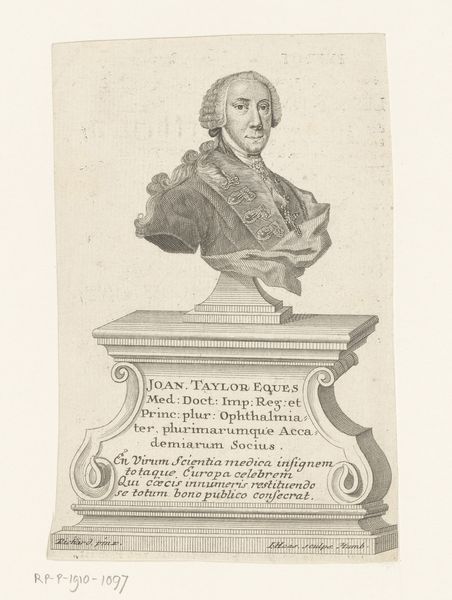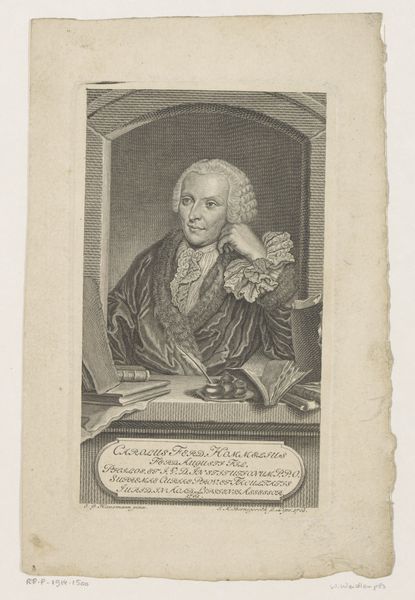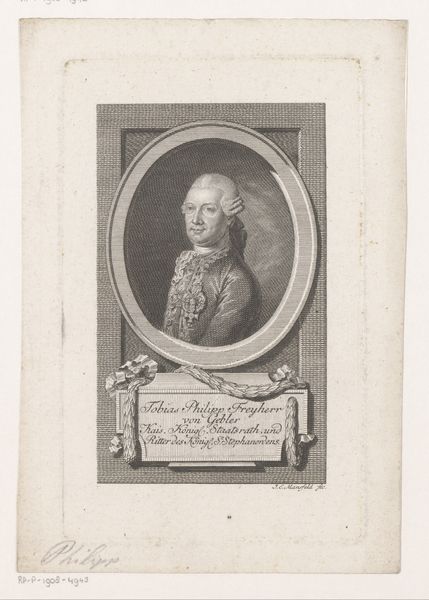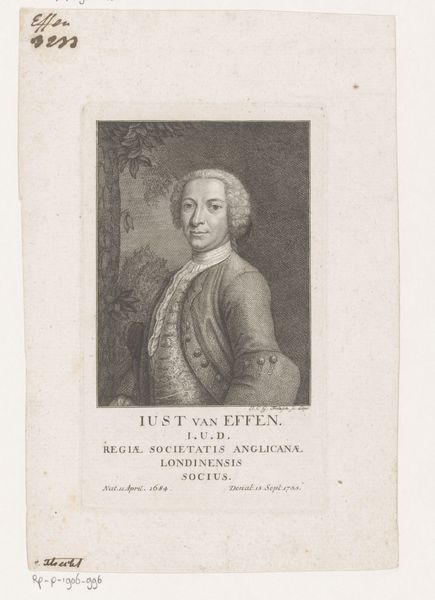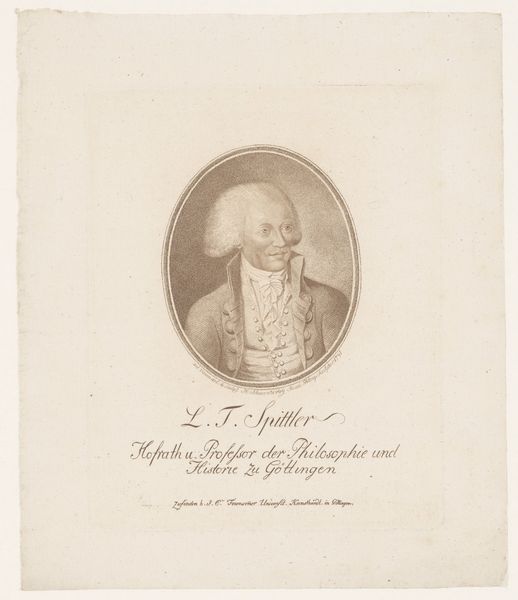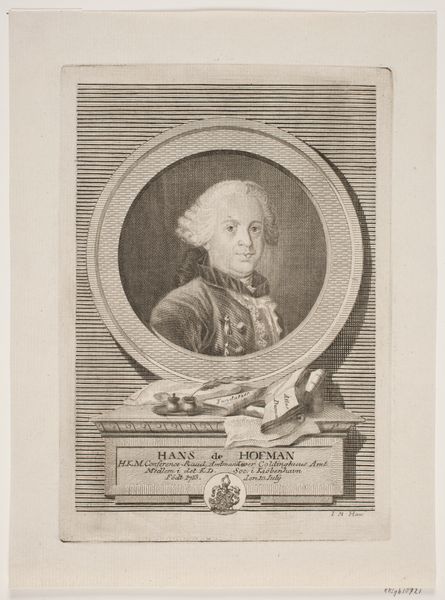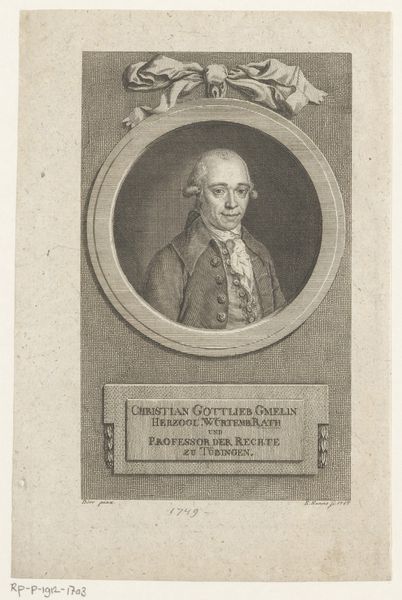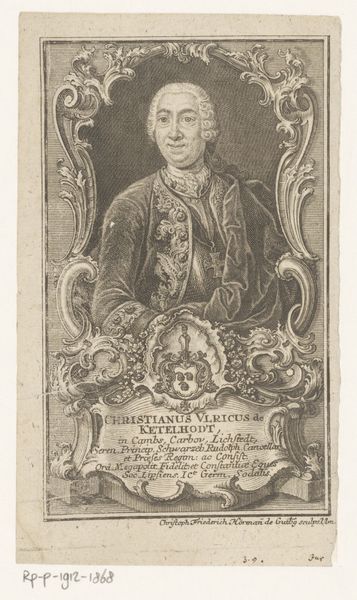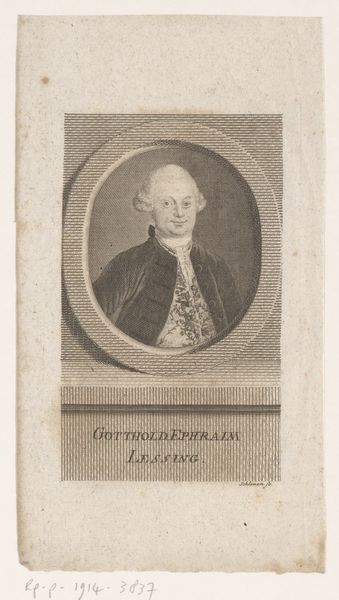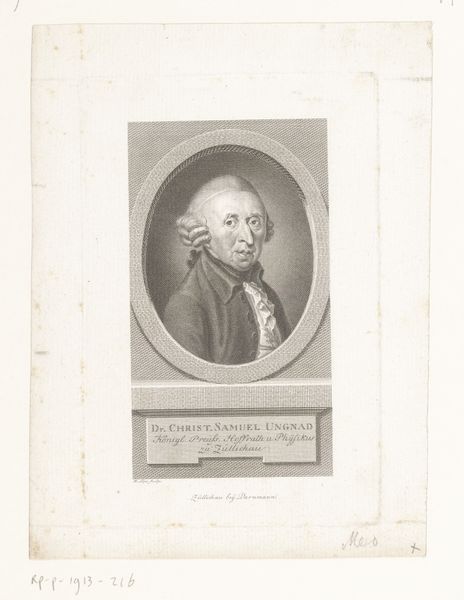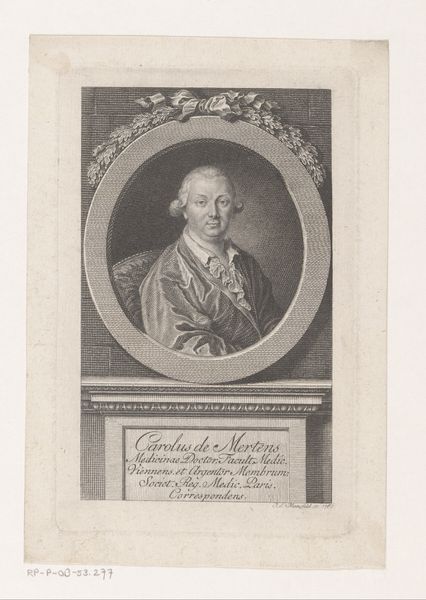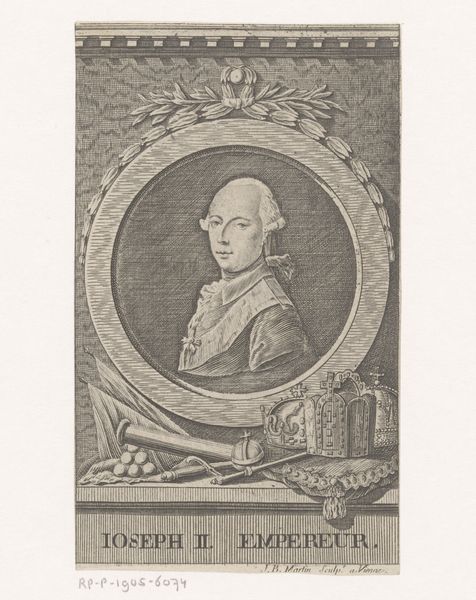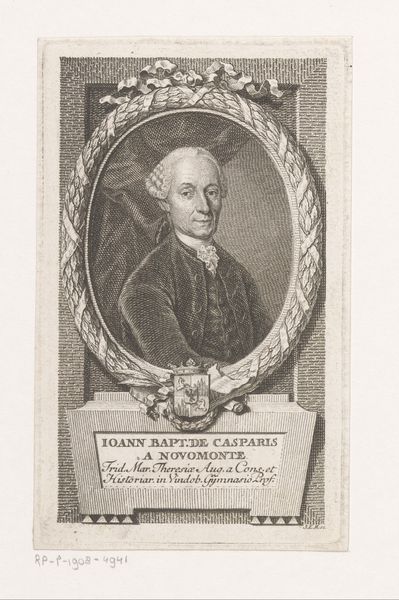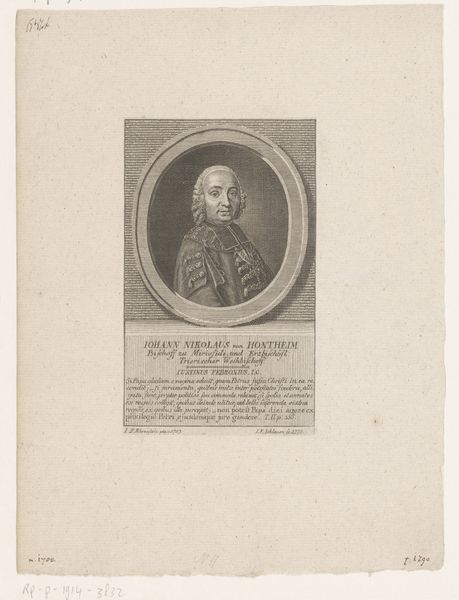
Dimensions: 188 mm (height) x 139 mm (width) (plademaal)
Editor: Here we have a print from the 18th or 19th century, "Frederik Lütken," signed Meno Haas. It's an engraving, a portrait really, contained within an oval frame. The detail is incredible given the medium. I'm curious, what symbols or meanings do you find particularly resonant in this portrait? Curator: What I see immediately is the formal nature of portraiture in this era, the use of the oval, of course, as a way to contain and elevate the sitter, as if to crown them in the classical style. Notice how Lütken is identified through his professional title—"Capit. og Confrol." I'm curious what those visual symbols meant to people then, and what, if anything, they still mean to us today? Editor: I suppose it's a declaration of status and profession, a visual shorthand that emphasizes social roles over individuality, at least to our modern eyes. Curator: Exactly. Consider how the background is comprised of strict parallel lines versus the textured detail used for Lütken's face and garments. One provides setting; the other defines personality, perhaps, or more accurately, social persona. Do you find that contrast creates a tension? Editor: It's less tension, more like... hierarchy. The lines act as a stage, setting him apart, supporting this role that is declared. And what does that say about how identity was constructed and conveyed at the time? Curator: Precisely. Identity then, as represented here, seems deeply entwined with one’s position within a specific societal structure. This portrait memorializes not just an individual, but a system of belief and order. I wonder how Lütken felt about his image being presented in such a formal way, how well it aligns to the individual he thought himself to be? Editor: It gives a lot of context. This wasn't just about capturing a likeness, it was about encoding a particular message. It makes you consider all the levels of information these portraits were meant to send, some perhaps intended for viewers hundreds of years later. Curator: It reminds us that symbols continue to evolve. They reflect shared social experiences in the same way a shadow matches an object. The study of imagery is like historical storytelling via visual representation.
Comments
No comments
Be the first to comment and join the conversation on the ultimate creative platform.
